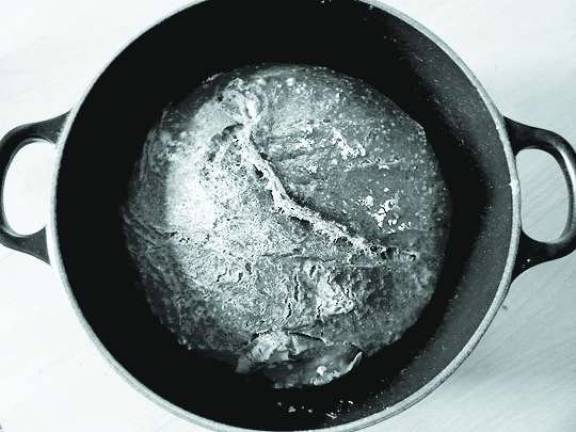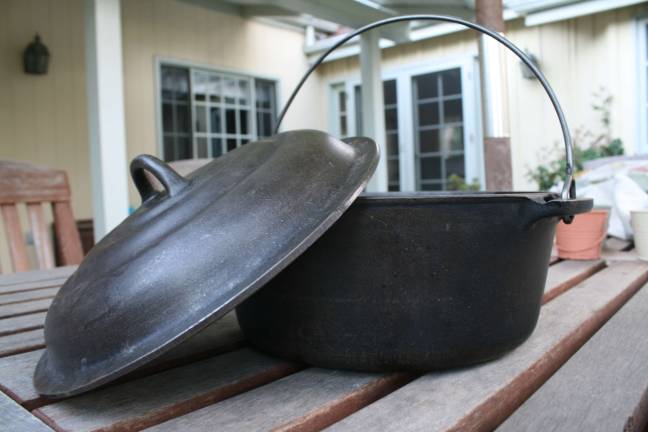Keep it clean and green for Christmas



'Tis the season to be in the kitchen, whether you're hosting an event, heading for a potluck or cooking a traditional meal for your family. Whatever the reason, you're probably going to buy ingredients, cook, clean — and enjoy some leftovers.
The Environmental Working Group recommends that you prepare your holiday feasts with your family's environmental health in mind. Choose food low in pollutants and added chemicals, avoid toxic chemicals in cookware, store and reheat leftovers safely, clean greener, and choose food low in pollutants and added chemicals.
Food can contain ingredients we don't want to eat — from pesticides to hormones to artificial additives to food packaging chemicals. Some simple tips to cut the chemicals:
Go organic — Make sure fresh fruits and vegetables are on the menu, and go organic when you can. Organic produce is grown without synthetic pesticides. Organic meat and dairy products also limit your family's exposure to growth hormones and antibiotics. It's OK to choose non-organic from EWG's "Clean 15" list of less-contaminated conventional fruits and vegetables, too (see sidebar). EWG's Shopper's Guide to Pesticides in Produce ranks popular fruits and vegetables based on the amount of pesticide residues found on them. EWG also offers the Shopper's Guide to Pesticides in Produce as an iPhone app.
Go fresh — Cook with fresh foods, rather than packaged or canned, whenever possible. Food containers can leach packaging chemicals into food, including the estrogenic bisphenol A that's used to make the linings of food cans. Go for fresh food or prepared foods stored in glass containers. Pick recipes that call for fresh, not canned, foods.
Avoid nonstick pans — Using a great pan makes a huge difference when cooking. But non-stick varieties give off toxic fumes over high heat. For safer cooking, EWG suggests cast iron and oven-safe glass. There are many new products on the market, but EWG says most companies won't tell you exactly what's in them. Even if they're advertised as "green" or "not non-stick," manufacturers do not have to release their safety data to the public. If you're "stuck" with non-stick, cook safer by never heating an empty pan, or putting it in an oven hotter than 500 degrees. Use an exhaust fan over the stove.
Avoid plastic — Leftovers can extend the joy of a holiday and give you a break from the kitchen. But be sure to avoid plastic when storing and especially when heating them. The chemical additives in plastic can migrate into food and liquids. Ceramic or glass food containers, such as Pyrex, are safer. Don't microwave food or drinks in plastic containers, even if they claim to be "microwave safe." Heat can release chemicals into your food and drink. Microwave ovens heat unevenly, creating hot spots where the plastic is more likely to break down.
If you do use a plastic container, handle it carefully. Use it for cool liquids only; wash plastics by hand or on the top rack of the dishwasher, farther from the heating element; use a paper towel instead of plastic wrap to cover food in the microwave. Also, avoid single-use plastic as much as possible — reusing it isn't safe (it can harbor bacteria) and tossing it out fills up landfills (and pollutes the environment).
Clean greener — Adopt safe cleaning routines. Open the window. Use gloves. Keep kids away from toxic products. Avoid anti-bacterials. Dust and vacuum often because dust often contains toxins. Microwave your sponge. Wash your hands with plain soap and water. Use a baking soda and water paste instead of commercial oven cleaner. Try natural alternatives like vinegar, baking soda and water.
Visit EWG's Guide to Healthy Cleaning (ewg.org/guides) to find safer cleaning products and DIY Cleaning Guide for recipes and tips on how to make your own non-toxic cleaners.
Source: Environmental Working Group: ewg.org.